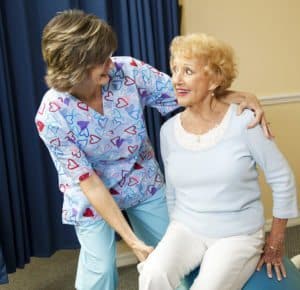What is Restless Leg Syndrome?
Home Care Services Philadelphia PA
Everyone has had that feeling of something crawling on their legs or that they simply cannot keep their legs still. This is an occasional occurrence for many people, but for some it is a daily struggle that can truly impact their health and quality of life. The condition that causes these symptoms on a chronic basis is called Restless Leg Syndrome. July 18 through 25 is Restless Leg Syndrome Education and Awareness Week. This is the perfect opportunity for you to learn more about this condition and how it impacts your parent so that you can alter your home care efforts to address their specific needs.
Some things that you should know about RLS include:
- Approximately 10 percent of the population throughout the United States has Restless Leg Syndrome.
- Around 2 to 3 percent of the adult population of the United States suffers from severe RLS that makes a significant impact on their quality of life.
- This accounts for more than 5 million people throughout the country.
- Though women are about twice as likely to experience the symptoms of RLS, it can and does occur in men as well.
- The severe form of RLS is more likely to exist in older adults, and the severity and duration of the symptoms tends to increase with age.
- This condition is classified as a movement disorder because those who suffer it must move their legs in order to relieve the symptoms.
- Approximately 80 percent of those who suffer from Restless Leg Syndrome also deal with a condition called periodic limb movement of sleep, or PLMS. This condition is characterized by involuntary movements during sleep such as jerking and twitching of the legs that can occur as frequently as ever 15 to 40 seconds.
- Though most people who have RLS also suffer from PLMS, the majority of people who have PLMS do not have RLS.
RLS has many symptoms, including a twitching, pulling, tingling, or itching feeling in the legs, as well as the uncontrollable urge to move their legs. These symptoms can occur on just one side of the body, but it is far more likely for them to occur on both. Many people do not seek medical attention for their condition, thinking that it is too mild or that there is no treatment. This can lead to far greater suffering. If you suspect your parent is coping with RLS, encourage them to seek the treatment that they need to overcome the symptoms and restore greater quality of life.
If your parent is suffering from Restless Leg Syndrome, elder home care services may be a fantastic choice for improving their quality of life. An elderly home care services provider can be there for your parent to offer the support and care that they need to help minimize their symptoms and cope with them when they do arise. This can not only help them to maintain better mental and emotional health, but also to get the sleep that they need and to reduce fall risk so that they stay safer and healthier as they age in place.
http://www.webmd.com/brain/restless-legs-syndrome/restless-legs-syndrome-rls
http://www.ninds.nih.gov/disorders/restless_legs/detail_restless_legs.htm
If you or an aging loved one are considering Home Care Services in Philadelphia PA, please contact the caring staff at True Direct Home Health Care today.
- How Home Health Providers Offer Education Amidst Physical Health Changes - March 5, 2024
- Spring Activities for Seniors - February 21, 2024
- How to Help an Older Loved One with Cataracts? - February 6, 2024

